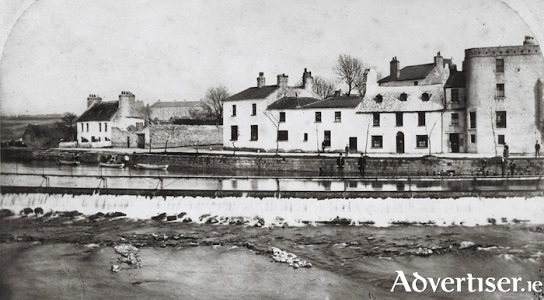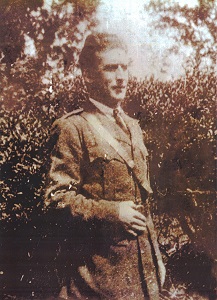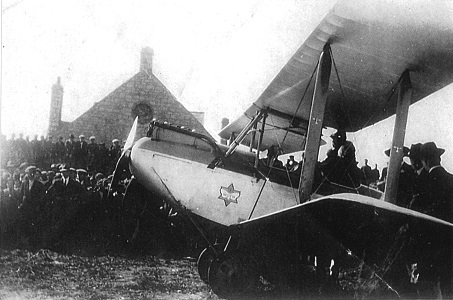Old Galway
Waterside, c1885

by Tom Kenny
Some 100 years before this photograph was taken, most of the area we are looking at would have been under water, the river covered much of what is Woodquay today. Most of the people who lived in the area would have been small farmers or fishermen, their houses (outside the city walls) made of blocks of stone, often with moss stuffed into the crevices and a roof covered partly with straw, partly with turf. The river provided a rich source of food, though in the city, the fishery, from the Salmon Weir to the sea, was privately owned.
PATRICK O’BRIEN, VOLUNTEER.

by Tom Kenny
Patrick was born in Waterdale, Claregalway in 1895. He joined the volunteers in 1914, and did drilling and training in arms for active operations.
In 1916, he saw active service at Carnmore Cross, at the Agricultural Station, Athenry; Moyode and Limepark. He was with the Claregalway Company (The Galway Brigade) under the command of Nicholas Kyne. He was involved in a shooting engagement, firing at a party of RIC during an attack in Carnmore on the Tuesday and at another party of RIC at Athenry on the Wednesday.
AN TAIDHBHEARC, 90 YEARS A’GROWING

by Tom Kenny
On December 3rd, 1927, a group of people met with the idea of setting up an Irish Language Theatre in Galway. The committee elected were Dr. Séamus Ó Beirn, President; Seán Mac Giollarnáith, Treasurer; Liam Ó Briain and Séamus Luibhéid, Secretaries; An tAthair Pádraic Ó hEidhin, Liam Ó Buachalla, Síle Ní Chinnéide, Tomás Ó Raghallaigh, Mícheál Ó Droighneáin, Donal Ó Riordáin and Tomás Ó Máille.
NEW DOCKS ROAD

by Tom Kenny
This photograph was taken from the far side of the docks c.1900 and shows New Docks Road in the distance and Bonham Quay on the right.. None of the buildings we see were on the 1820 map, most were built in the mid-nineteenth century outside the old city walls and many of them were once part of the Burbidge or Chambers estates.
HILLS OF LOWER DOMINICK STREET

by Tom Kenny
This photograph, dated 1905 was part of an advertisement for Hill & Co. Cycle Makers and for Hill’s Dublin Studio, a photographic gallery. Both of these were located in this building in Lower Dominick Street. You have to hand it to Edmund Hill, he was a dab hand at publicity, and advertised extensively.
His photographic studio was patronised by their Royal Highnesses the Duke of Connaught and the late Duke of Edinburgh (Saxe Coburg and Gotha), Lords Killanin, Wallscourt, Coleridge etc., and ‘our patrons range from the Royal Family to the peasant’. He sold photographs from stamp size (a shilling a dozen) to life size. He was ‘an authority on children, his photographs of them were awarded first place against all competitors’ “To be in the fashion was to pay his studio a visit”.
Lady Mary Heath in ‘The Swamp’

by Tom Kenny
Lady Mary Heath was a famous pioneering pilot. She was born in Knockaderry near Newcastle West, Co Limerick, in 1896. She was an accomplished sportswoman who helped introduce women’s track events to the Olympics. The 1920s was an era when the world seemed to have gone aviation mad, thanks to the exploits of Charles Lindbergh and Amelia Earhart. In 1927, Lady Mary became the first woman to hold a commercial licence in Britain, the first woman to parachute out of an aircraft, and the first pilot to fly a small open-cockpit plane from Cape Town to London. She set records for altitude in a small plane. For much of the 1920s she was one of the best known women in the world, brave, determined, and accomplished.
Coláiste Éinde, ninety years
by Tom Kenny
Coláiste Éinde was founded very shortly after the State itself was founded. The aim was to educate boys through the medium of Irish so that they would go on to St Patrick’s teacher training college, get secure employment for life, and in turn, teach a new generation of boys through Irish. It started life in Furbo House, an old house belonging to the Blake family. A domestic problem arose within the family who owned the house, so the school’s stay there was brief and they had to leave at Christmas 1930. The college was transferred to Talbot House in Talbot Street, Dublin, the following month.
The art of hurling

by Tom Kenny
In the year 1527, it was decreed in one of the Galway Statutes that “At no time to use ne occupy ye hurling of ye little balle with the hookie sticks or staves, nor use no hand balle to play without the walls, but only the great foot balle”. It seems the authorities of the day were trying to limit the playing of hurling, but they might as well have tried to hold back the tide.
.png)